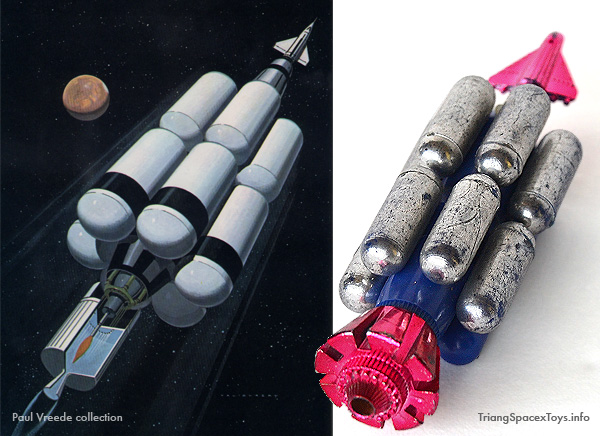
The Booster Rocket is based on a proposed spacecraft to be used in a mission to Mars as planned in the early 1960s. Although the spacecraft was a design by Advanced Nuclear Systems Engineering of the Missile and Space Division of General Electric, there is reason to believe the toy's design is actually based on two illustrations by Ed Valigursky in the Man and Space book. One of these illustrations (above) shows the craft itself. As Grif Ingram pointed out however, the toy's engine exhaust is clearly based on another spacecraft shown in the same book, which I think is a DAC Helios, a Douglas design for a successor to the Saturn-V spacecraft (below).
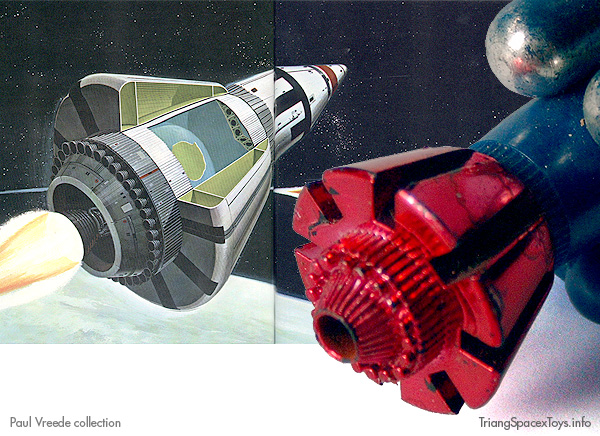
The Spacex model of course has a larger cousin in the Project Sword Booster Rocket (below), although the actual toy designs are rather different in detail. However, both toys do share the four exhausts on the little shuttle at the front, which in both cases can also be fired at the press of a button. (As an aside: comparing the Sword box artwork with the Valigursky illustration clearly indicates the (unknown) Century 21 box artist had seen the Man and Space book as well!)
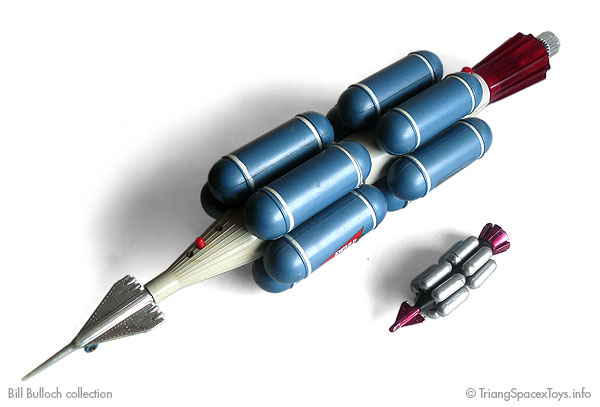
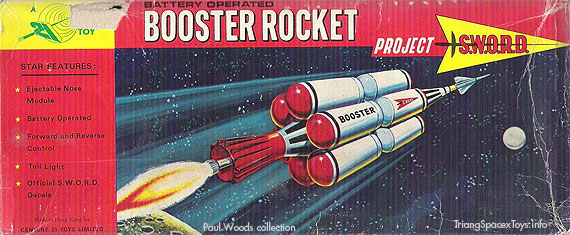
The Sword Booster rocket is a beautiful toy, with a length of 46 cm / 18 1/8 in overall. It's battery operated, running forwards and in reverse, while the exhaust cone lights up. The little shuttle can be ejected to move on its own wheels.
We don't know the actual manufacturer, though as with the Nuclear Ferry, it could possibly have been Tai Hing because the plastic colours for the Sword version are identical to those used for their Prospector toy. Whoever it was, they also supplied the Booster Rocket for the Hover brand. Although this has different colours and sports fictitious NASA badges, the box art is almost identical to the Project Sword version. The example below was found in Italy.
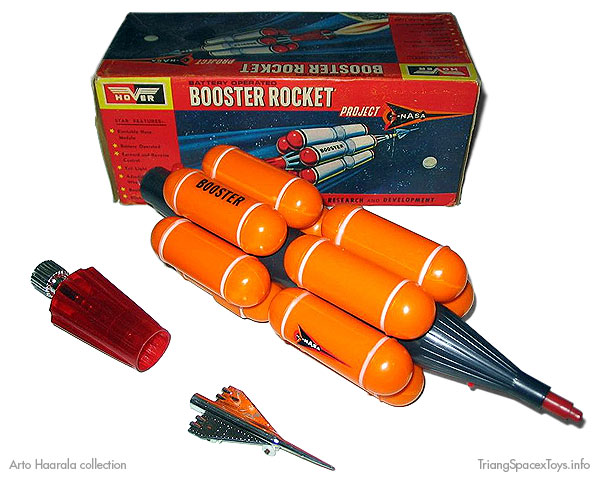
To promote sales, the Booster Rocket received quite some attention in Project Sword stories and was also featured in the Project Sword annual with a profile piece followed by a comic strip. It was of course also included in the Project Sword manual (second down).
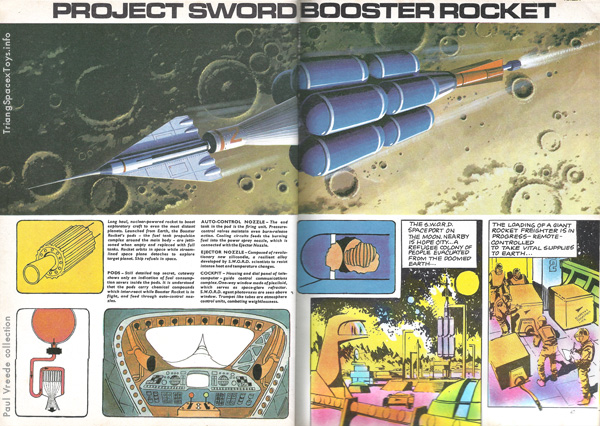
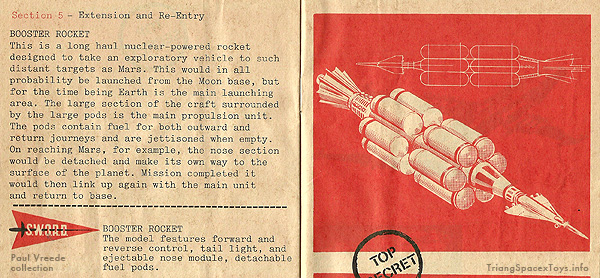
Returning to the real General Electric craft, the Man and Space book describes how the Mars mission would have been staged (click to enlarge in new window):
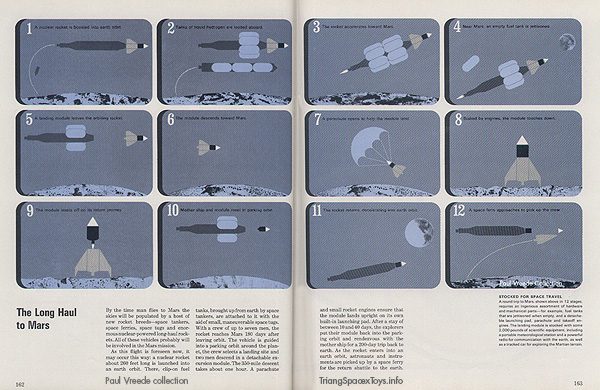
This sequence is also illustrated in a series of photographs from a study by T.F. Widmer of General Electric Corp itself, which also appear as an extra in the back of Beyond Tomorrow published in 1965 by Dandridge Cole, another General Electric engineer. The beautiful model(s) in these photographs will be the closest representation of the General Electric craft, and thus serve us as the ultimate design origin of the Spacex Booster Rocket. (Note: this is not the entire image sequence, and some images I've cropped much more than others.) Getting down from the Mars lander does look pretty precarious...
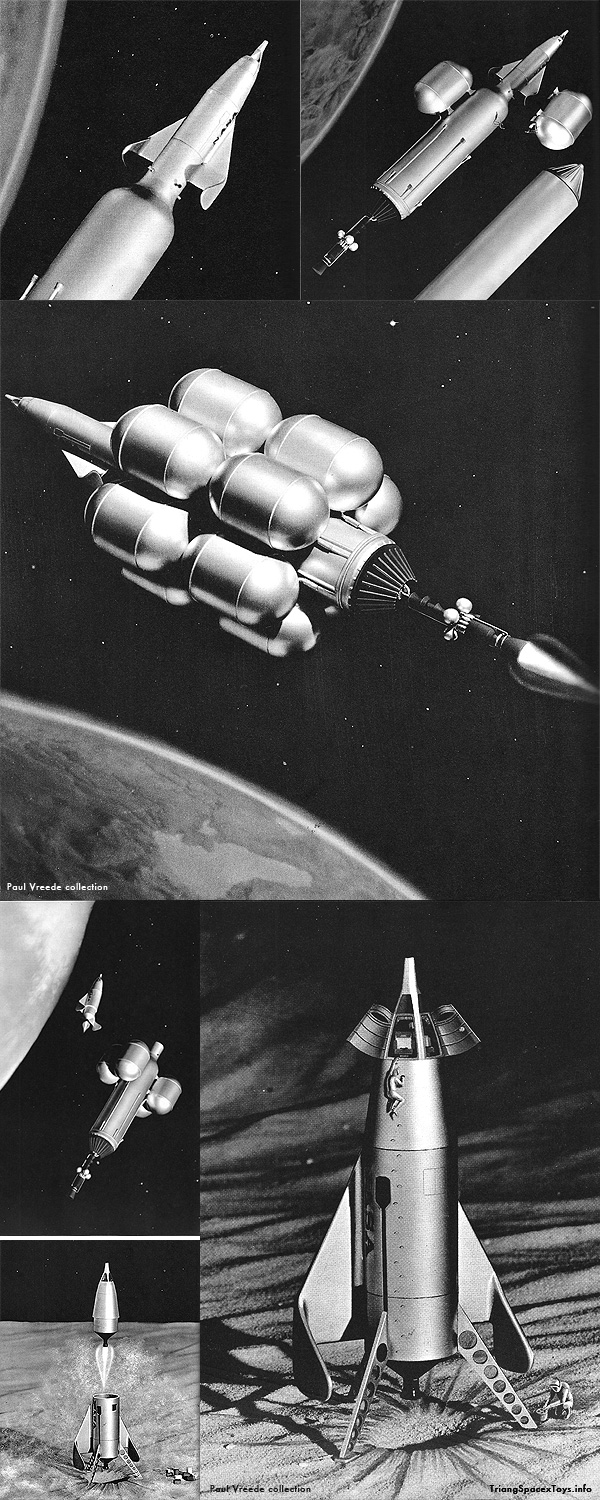
For those interested in the hard science behind the Booster Rocket, here's a pdf of Widmer's contemporary report on the craft, courtesy of Winchell Chung. Winchell also points out the Valigursky illustration shows the Booster Rocket to be fitted with an open-cycle gas-core nuclear engine, which he says would be a deadly radiation hazard when used in Earth orbit: "The advantage is that such an engine has very powerful performance. The disadvantage is that orange plume is vaporized uranium/plutonium undergoing nuclear fission. Which would not ordinarily be a problem except that the uranium is shooting out the exhaust nozzle." This would explain why the Man and Space sequence shows a separate lift-off stage in its first panel, which would presumably be powered by conventional rocket fuel. The deadly nuclear engine wasn't known or just ignored by Century 21 writer Angus Allan and artist Malcolm Stokes, for they show the entire Booster Rocket lifting off (you can see it in the backgound of the first panel in the comic strip above) and touching down on Earth. Landing on it's tail, it'd be sitting in the middle of its own radiation disaster!
Cereal cousin
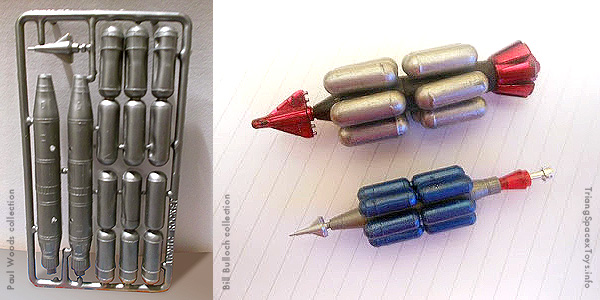
R&L (Rosenhain & Lipmann) from Australia produced a mini-kit of the Booster Rocket in the later 1960s for their range of cereal premium space kits, which was subsequently copied by Diko in Mexico. It was however not included in the series of six R&L space toys offered by Kellogg's in the UK in 1968 (see Molab origin page).
Marked "Atomic Rocket" on the sprue, it builds a lttle model that's quite a bit smaller than the Spacex version. The picture above compares the two, though Bill Bulloch has painted it up to look like the Project Sword version and also added an exhaust made from two Lego parts.